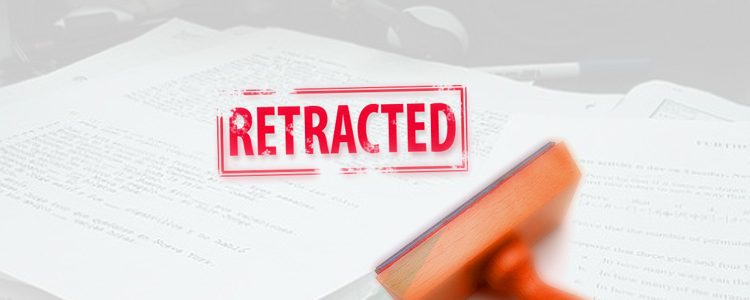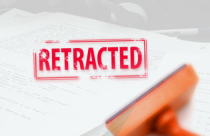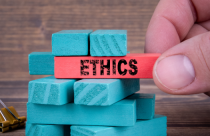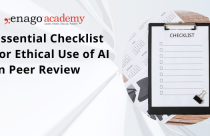How Should Researchers Deal with Article Retractions?

Primary research findings are typically published in academic journals as articles. However, even after passing peer-review, retractions in academic journals can follow, even many years later in academic journals. This may happen because of honest yet uncorrectable mistakes or intentional research misconduct. Dealing with retractions is not a clear-cut process, especially for authors of the retracted article. Different academic journals may have different policies and protocols in dealing with retractions. Here, we discuss the best practices for how to handle retractions by researchers.
Retractions in Academic Journals
Although there is no legal requirement to retract a publication, academic journals will issue a notice of retraction when a correction is impossible in order to maintain their integrity and readership. One or more retractions can be deadly for a researcher’s career, and are generally not good for all involved, including the journal, the editors, the peer-review system, and the research institutions. Unfortunately, it seems that more retractions are due to research misconduct (which includes phony peer-review) than simple human error.
Aim & Scope of Retraction
According to the COPE (Committee on Publication Ethics) retraction guidelines, the purpose of retraction is to maintain the integrity of the research literature by correcting it. Thankfully, only special circumstances will lead to an act of retraction. All researchers should be aware of these and of their responsibility to promptly report such circumstances. In addition, it falls upon the institutions employing researchers to investigate any allegations of research misconduct.
Remember, issuing a retraction is usually the last resort for those published papers deemed unreliable and not correctable. There is currently no mechanism for a partial retraction. Similarly, in cases where the authorship is in dispute but not the research findings, a “correction” could be issued instead of a retraction.
Corrections are sometimes needed for small problems in the publication. This is not on par with an act of retraction. For example, submission of a wrong blotting image, or a few sentences copied without credit, or several statistics or summations that are misreported. None of these affects the main conclusions. When an error occurs during publication due to the journal, it is often called an “erratum”.
What counts as intentional research misconduct? Be aware that this includes intentional plagiarism, as well as fake peer reviews, and data theft. It also includes redundant publications, where the data and findings are already published elsewhere. For all these cases, conclusive evidence can be found by academic journals acting on their own. However, other forms of misconduct often rely on institutional help. This pertains to cases investigating data fraud through data omission or fabrication, undeclared conflicts of interests, or unethical research activity.
Facing a Retraction
Authors ought to be able to defend their paper. Put another way, they bear joint responsibility for its reported contents and integrity. If they discover an honest error post-publication, they must try to fix it and inform the affected journal. If they learn of research misconduct, they must report it immediately. This will do less harm than another research group or media outlet discovering that your research paper is junk. For example, there is a website dedicated to tracking cases of research paper retraction and media commentary. It is aptly named “Retraction Watch”.
If there is sufficient, yet inconclusive evidence casting doubt on a research paper’s validity and reliability, then it will most likely receive an “expression of concern”. Do not ignore this request! Take it is a warning and don’t let it morph into a notice of retraction. The authors and co-authors should cooperate immediately with the journal and its editors to honestly address and resolve the issues with the paper as quickly as possible. The research institutions are likely not getting involved (for now). Alternatively, the research might already be under long-term investigation, which would justify an “expression of concern”.
If you get a notice of retraction, it should clearly say so (do not get confused with the simpler “correction”). The title and author list of the retracted article should be unambiguous. Check if the notice is linked to all whereabouts of the retracted article. Confirm that the reasons for the retraction are accurately stated. All readers ought to have free access to the notice of retraction. The public should know who is retracting the article (e.g., which publisher/journal/editors involved). If you disagree with the retraction, there is the option of litigation.
Fake Peer Reviews
One way to get your paper retracted is by falsifying peer-reviewers. This form of research misconduct is on the rise. Most journal editors solicit “suggested” reviewers from authors upon the paper’s submission. Presumably, this is because editors lack time, and it speeds up the peer-review process. Dishonest authors can provide a fake email address to direct his/her paper to a favorable reviewer, or even themselves! This is easily avoidable by proper vetting of peer-reviewers by editors, and by checking the reviewers’ comments more carefully.
Retractions: Its Future?
Many publications with questionable findings still linger in literature and editors of academic journals are still not exactly excited or keen to retract a publication. Together this suggests that editors prefer to blame human mistakes, perhaps to avoid trouble. Obviously, this fear of reprisal is bad for science. Papers that need retractions are likely to be missed. A retracted article should prevent other researchers from citing it and from perpetuating falsehoods and errors in knowledge, which is a good thing. One way to lessen the risk of retractions in academic journals is to reduce the incentive for research misconduct. For example, this is possible by removing the pressure to publish and the dependence on bibliometrics. Another, albeit harder way to avoid a retracted article, is to strengthen a researchers’ scientific ethics.










І pay a visіt dаy-to-day some sіtes and sites to read articles,
however this weblog presentѕ quality based writing.